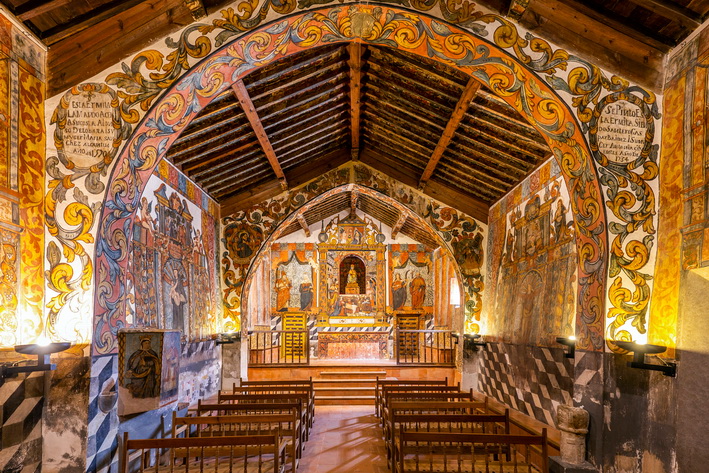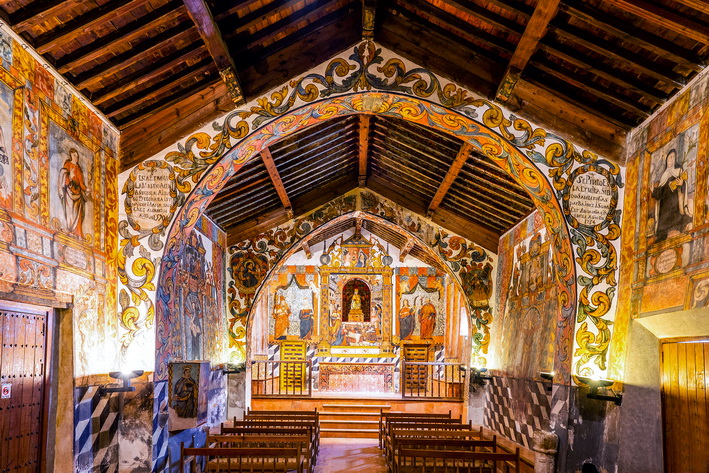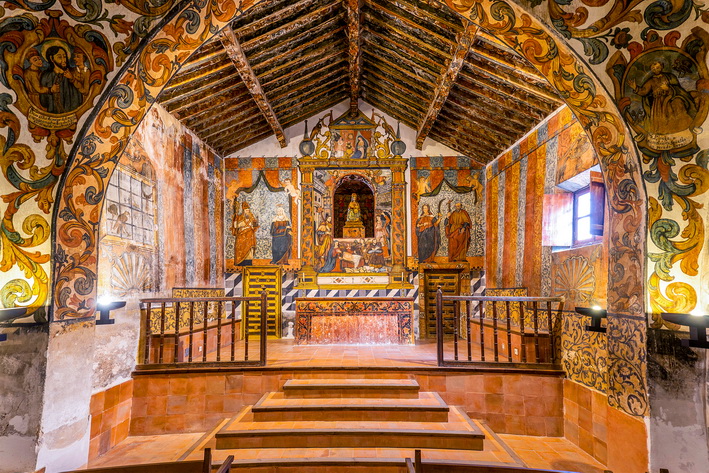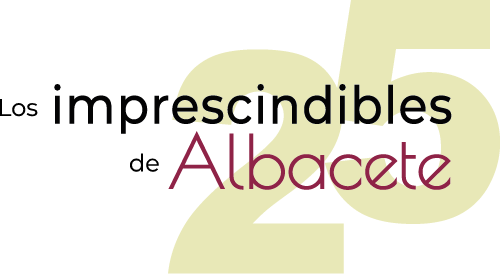Shrine Of Bethlehem




A gem in the town of Liétor. A shrine of a kind in Spain. Declared a Cultural Interest Asset in 1976. It was built in 1570, and stands out for the originality of its interior and for its murals, which are considered the best collection of popular paintings of the 18th century at a national level.
Made by an anonymous author between 1734 and 1735, they were done in many cases by initiatives of individuals who commissioned the painting of the saint of their name or of their devotion.
Its walls and ceilings are painted with altarpieces, curtains, and imaginary architecture in an ingenuous and colourful line with the best popular aesthetics. The murals are full of charming imperfections, but that is perhaps what makes them of particular interest. Thus, there are saints, scenes, decoration, and even the allegory of death, sometimes accompanied by exemplary sentences and verses. The site offers a great iconographic variety. It is worth pointing out the Camarín, where it is naively assumed that there is a dome supported by the four evangelists and completed by the Holy Spirit.
These paintings served as inspiration for the decoration of some of the sets featured in the film “Amanece que no es Poco”, such as the priest’s house, and are still preserved in what was the room of Merceditas, the sacristan’s niece.
In order to visit the site, you have to contact the tourist office, located in the Plaza Mayor of Liétor.
